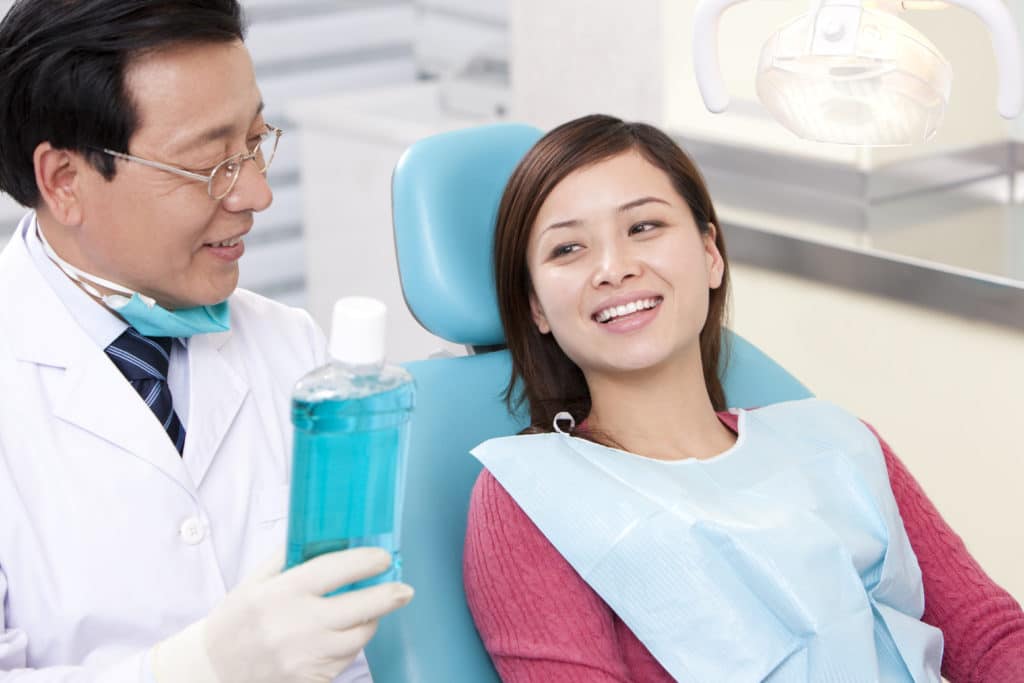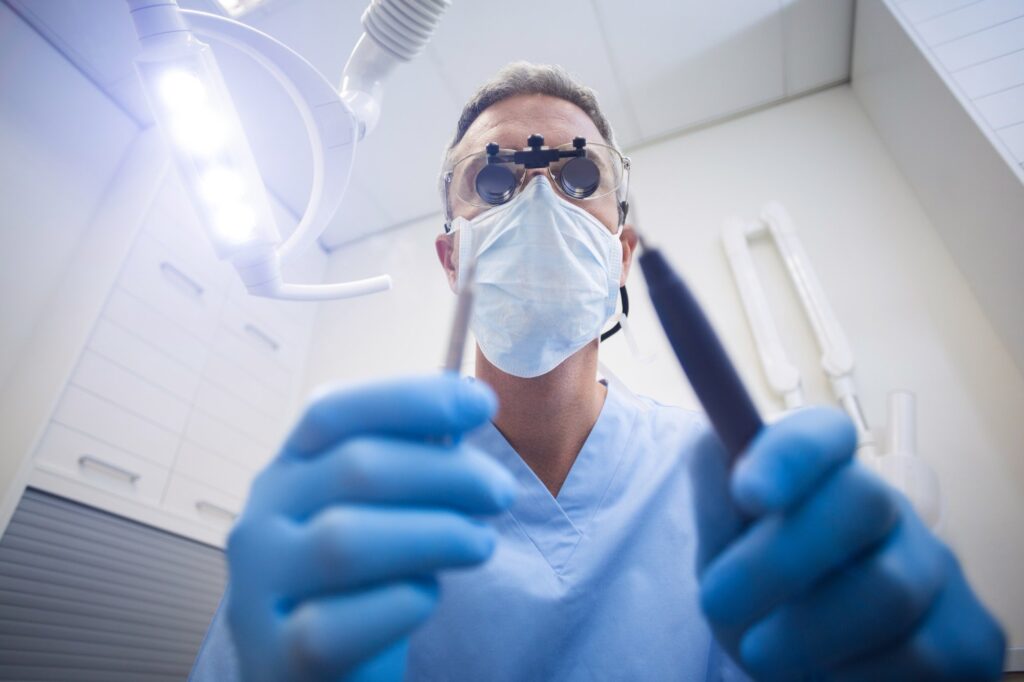Gum disease, often overlooked, is a prevalent condition affecting many individuals worldwide. In this article, we’ll delve deep into the different stages of gum disease, debunk common myths, and highlight the importance of periodontal care in Northeastern Pennsylvania.
The Stages of Gum Disease
- Gingivitis:
- The earliest stage of gum disease, characterized by redness, swelling, and bleeding gums.
- Often caused by the buildup of plaque on the teeth.
- The good news? It’s reversible with proper dental care.
- Periodontal Disease:
- If gingivitis is left untreated, it can progress to periodontal disease.
- At this stage, the gums pull away from the teeth, forming pockets that can become infected.
- Over time, the bones, gums, and tissue that support the teeth can be damaged, leading to tooth loss.
- Advanced Periodontitis:
- The final stage where the fibers and bone supporting the teeth are destroyed.
- This can lead to shifting or loose teeth, affecting your bite.
Myths and Facts about Oral Health

With so much information available, it’s easy to get misled. Let’s debunk some myths using insights from Casey Dental’s Dental Cleanings page:
- Myth: Bleeding gums are normal during brushing. Fact: Bleeding gums are an early sign of gingivitis. Regular dental cleanings can help address this.
- Myth: Gum disease is only a dental issue. Fact: Gum disease can be linked to other health complications like heart disease, diabetes, and respiratory issues.
- Myth: Losing teeth is inevitable with age. Fact: With proper oral care, teeth can last a lifetime.
The Scientific Side of Oral Health
Pennsylvania is currently facing a significant dental crisis, with a notable shortage of dental hygienists and expanded function dental assistants, leading to a vast gap between the demand for and supply of oral health care services. This alarming situation has been highlighted in a recent article titled “Addressing Pa.’s dental crisis: A call to action” on lvb.com. For those in Luzerne County seeking top-tier dental care, Casey Dental stands out as an award-winning dental practice. Located in Pittston, PA, Casey Dental offers a comprehensive range of services, including general dentistry, adolescent dentistry, oral surgery, and orthodontics. With a team of highly qualified professionals led by Dr. Shawn Casey, patients can be assured of receiving exceptional care tailored to their needs.
Periodontal Care in Pennsylvania
Pennsylvania, home to renowned dental clinics like Casey Dental, emphasizes the importance of periodontal care. Services range from regular cleanings to specialized treatments for gum infections. With state-of-the-art facilities and a team of dedicated professionals, residents of Pennsylvania have access to top-tier periodontal care.
Addressing Gingivitis: Steps to a Healthier Smile with Casey Dental

Gingivitis, the earliest stage of gum disease, is characterized by red, swollen, and sometimes bleeding gums. While it might sound alarming, the good news is that gingivitis is reversible. Here’s how you can address it:
- Professional Dental Cleaning:
- The first step in treating gingivitis is to have your teeth professionally cleaned. This removes the plaque and tartar buildup that’s causing the inflammation.
- At Casey Dental, the team uses advanced equipment and techniques to ensure a thorough cleaning, setting the foundation for healthier gums.
- Regular Brushing and Flossing:
- Brushing twice a day and flossing daily is crucial. This routine removes food particles and plaque, preventing them from turning into tartar.
- Consider using an electric toothbrush, which can be more effective at removing plaque.
- Antiseptic Mouthwash:
- Using a mouthwash that fights bacteria can help reduce the plaque and bacteria causing gingivitis.
- Always choose a mouthwash that’s ADA-approved for best results.
- Regular Dental Check-ups:
- Regular visits to the dentist ensure that any signs of gingivitis are caught early.
- At Casey Dental, not only will you receive a thorough check-up, but the team will also provide personalized advice and recommendations tailored to your oral health needs.
- Healthy Diet:
- Consuming a balanced diet rich in vitamins and minerals supports gum health.
- Limit sugary snacks and drinks, as they can promote plaque growth.
Casey Dental: Your Partner in Gum Health
Recognizing the early signs of gingivitis and taking proactive steps is crucial. And with Casey Dental by your side, you’re not alone in this journey. With a range of services, from regular cleanings to specialized gum treatments, Casey Dental has everything you need to address gingivitis and ensure optimal oral health.
Gum disease, while common, can have severe repercussions if left untreated. By understanding its stages, debunking myths, and recognizing the importance of periodontal care, we can take proactive steps towards optimal oral health. Whether you’re in Pennsylvania or elsewhere, prioritize your gum health; it’s an integral part of your overall well-being.
Listerine and Hydrogen Peroxide: Are They Effective Against Gingivitis?

When it comes to combating gingivitis, many products claim to be effective. Among them, Listerine and hydrogen peroxide are commonly mentioned. But how effective are they? Let’s break it down:
- Listerine for Gingivitis:
- What is it? Listerine is a brand of antiseptic mouthwash that has been around for over a century.
- Effectiveness: Listerine, especially its antiseptic variants, is formulated to kill bacteria that cause plaque, gingivitis, and bad breath. Clinical studies have shown that Listerine can reduce gingivitis when used as part of a regular oral care routine.
- Usage: It’s recommended to use Listerine twice a day, swishing it in the mouth for about 30 seconds. However, it’s essential to note that while Listerine can help reduce gingivitis, it’s not a replacement for brushing and flossing.
- Hydrogen Peroxide for Gingivitis:
- What is it? Hydrogen peroxide is a mild antiseptic used to prevent infections in minor cuts, burns, or scrapes. It’s also used in oral care as a mouth rinse to help remove mucus or relieve minor mouth irritation.
- Effectiveness: Hydrogen peroxide has antibacterial properties, making it effective in killing bacteria in the mouth. When used as a mouthwash, it can help reduce gum inflammation and bleeding associated with gingivitis.
- Usage: If considering hydrogen peroxide as a mouth rinse, it’s crucial to dilute it with an equal amount of water. Swish the solution in your mouth for about 30 seconds and then spit it out. It’s essential not to swallow hydrogen peroxide. Also, it’s a good idea to consult with a dentist before incorporating hydrogen peroxide into your oral care routine.
Conclusion: Complementary Tools in the Fight Against Gingivitis
Both Listerine and hydrogen peroxide can be effective tools in combating gingivitis when used correctly and as part of a comprehensive oral care routine. However, it’s essential to remember that these products are complementary and should not replace regular brushing, flossing, and dental check-ups. For personalized advice and recommendations tailored to your oral health needs, consult with a dental professional like Casey Dental.






